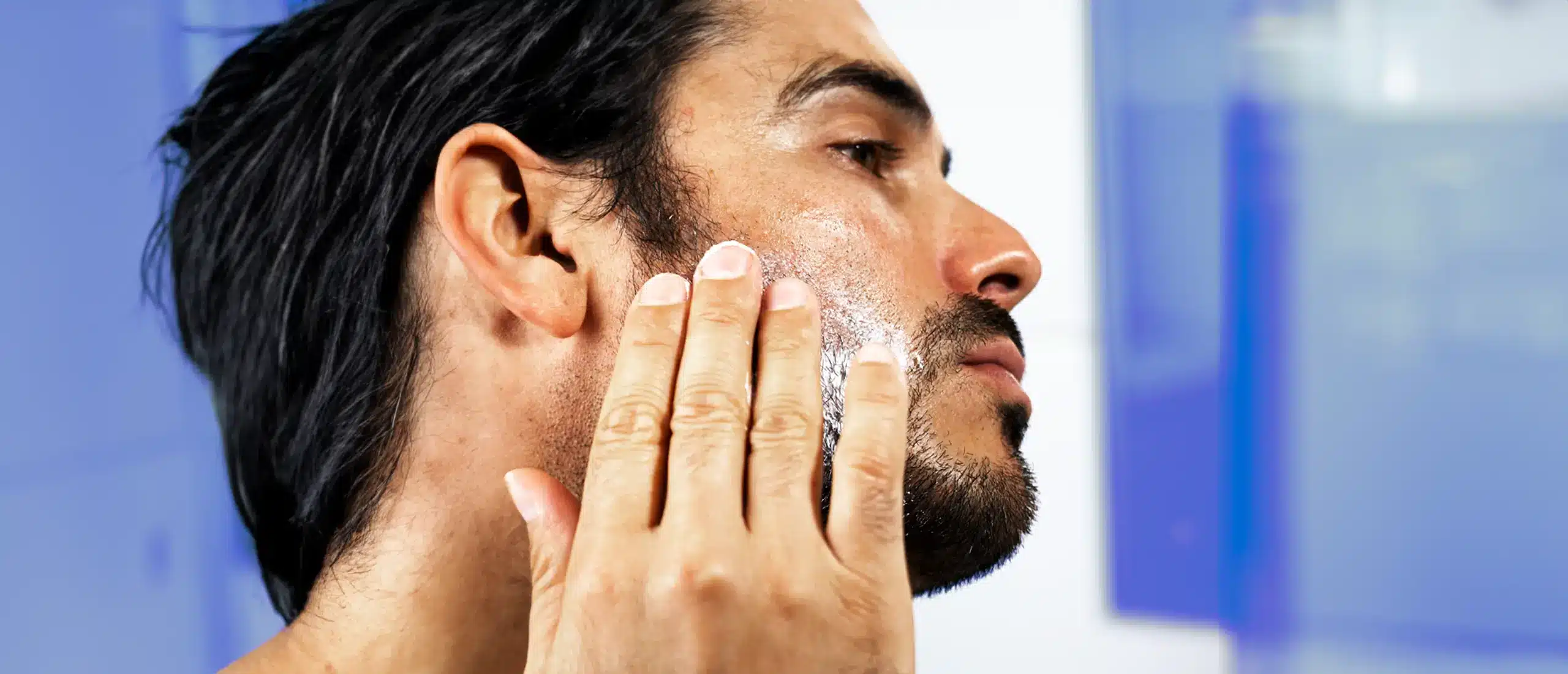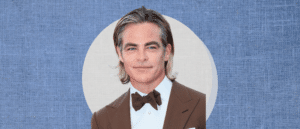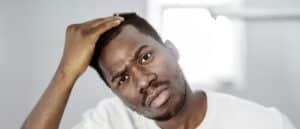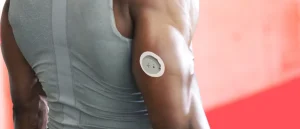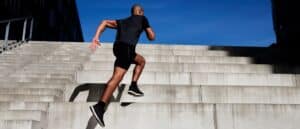Can You Use Minoxidil For Beard Growth? We Asked a Hair Loss Expert
- By Rebekah Harding
- Fact-checked by Mike Fazioli
- November 1, 2023
30-Second Takeaway
Minoxidil is FDA-approved for scalp hair growth, but is also safe for off-label beard-growth use. However, minoxidil may only promote beard growth in some men.
G
rowing a beard won’t give you wizard-level knowledge, but that hasn’t stopped facial hair from becoming the latest focus of the optimization obsessed. Exhibit A: Huberman Lab podcast host and neuroscientist Andrew Huberman’s beard basically has its own Reddit fan club.
Men have long turned to fiber-infused beard powder, microneedle beard rollers, and beard implants to achieve Gimli-level facial hair. Some are repurposing a popular scalp-hair growth treatment—minoxidil—to promote beard growth. Subreddit r/minoxbeards boasts over 76.3 thousand members (affectionately dubbed “terminal hairs”), where men compare minoxidil beard growth progress.
But does it work? A trichologist (aka hair-loss specialist) weighs in on the safety and efficacy of minoxidil for off-label beard growth use.
What is Minoxidil?
Minoxidil (the active ingredient in Rogaine) is an over-the-counter topical medication that stimulates damaged or under-active follicles to coax out new growth (1, 2). The treatment is usually applied as a liquid or foam, but may be prescribed orally by a dermatologist for more severe cases.
Minoxidil was FDA-approved in 1988 to treat hormonal male-pattern baldness—not sudden or unexplained hair loss. It has since been used to treat other hair thinning disorders.
In order to remain effective, you have to apply minoxidil indefinitely (or until you’re cool going bald).
How Does Minoxidil Work?
Let’s back up a minute and understand how hair grows. Your body is covered in hair follicles, small tube-like structures in the skin where hair sprouts from. Age, environmental heat exposure, and health conditions like male pattern baldness and alopecia can cause follicles to be less active (3, 4, 5).
Research suggests minoxidil causes blood vessels around the follicle to dilate, which promotes blood flow to the hair’s roots. The follicle gets more nutrients and oxygen, which helps your hair grow.
During a typical hair cycle, hair grows, matures, and then falls out. Research shows that minoxidil may also increase the anagen (growth) phase of the hair follicle (2). Meaning: It extends how long your hair takes to mature, which can lead to thicker and stronger hair.
About the Expert:
Celestine Gitau is a certified trichologist with the International Association of Trichologists (IAT), with a background as a registered nurse.
Can You Use Minoxidil for Beard Growth?
Minoxidil is only FDA-approved for use on the scalp, but trichologist and registered nurse Celestine Gitau, R.N., notes that it is also safe to use on the beard. However, it won’t work for all guys.
“Growing a beard is genetic,” based on genes that signal your facial vellus hair (think peach fuzz) to turn into terminal hair (coarse, hormonal hair) after puberty, Gitau explains. Even if you have the genes to grow a full, thick beard, you may experience delayed or uneven beard growth—that’s when minoxidil can help.
Minoxidil has been shown to effectively boost hair regrowth by up to 45 percent in men who applied the topical treatment to their scalp (6). Research on beard growth and minoxidil is limited, but what we know so far suggests that it may be effective.
One 2016 double-blind study published in the Journal of Dermatology found that men who applied 3 percent topical minoxidil to their chin and jawline for 16 weeks had visually thicker facial hair and an increased average hair count (7).
For topical minoxidil to work, you have to have an enzyme known as sulfotransferase, which is found on the outer root sheath of the hair follicle, per Gitau.
“This enzyme may not be present in some people. Those [men] may not find topical minoxidil effective for both hair and beard growth,” Gitau explains. Even though scientists have successfully tested men for sulfotransferase in a lab setting (8), the only way to check if minoxidil will work for you is to give it a try.
How to Use Minoxidil for Beard Growth
If you’re trying to grow your beard or regrow thinning patches, you’ll need to lather topical minoxidil onto the affected area for 3 to 6 months, according to Gitau. If you notice hair thickening at this point, continue to use minoxidil. If your beard doesn’t get any fuller, stop treatment.
Facial skin tends to be more sensitive than your scalp, so apply a patch test on the thin skin on the instep of your elbow to make sure minoxidil won’t cause your mug to break out.
Who Shouldn’t Use Minoxidil for Beard Growth?
Some men are allergic to topical minoxidil, per Gitau. If that’s you, you’ll notice itching, rashes, or burning sensation when you apply it.
Men with preexisting skin conditions around their facial hair—like eczema, psoriasis, or dermatitis—should talk to a trichologist or dermatologist before using minoxidil on their face, since the medication can make preexisting irritation worse.
In some rare cases, minoxidil may increase heart rate (9). Men with cardiovascular issues should get the thumbs up from their doctor before using minoxidil.
Studies show that higher doses of minoxidil (like 5 percent concentrations) are more likely to cause side effects than lower dose (3 and 2 percent) formulas (6). Start at a lower dose, and taper up. If you begin to experience side effects, lower your dose.
How Long Will it Take to Grow a More Robust Beard?
If your hair follicles are compatible with minoxidil, you should start to notice a fuller beard around two months into treatment (10).
Keep in mind: Applying minoxidil is like going to the gym—If you stop, you lose what you gained. If you find that minoxidil works for your beard, you’ll have to continue applying it indefinitely.
References
1. National Library of Medicine. Minoxidil Topical.
2. Suchonwanit, et al (2019). Minoxidil and its use in hair disorders: a review.
3. Trueb, et al (2018). A Comment on the Science of Hair Aging.
4. Topping, et al (2000). The temperatures reached and the damage caused to hair follicles by the normal-mode ruby laser when used for depilation.
5. Trueb, et al (2018). Scalp Condition Impacts Hair Growth and Retention via Oxidative Stress.
6. Olsen, et al (2002). A randomized clinical trial of 5% topical minoxidil versus 2% topical minoxidil and placebo in the treatment of androgenetic alopecia in men.
7. Tanglertsampan (2016). Efficacy and safety of minoxidil 3% lotion for beard enhancement: A randomized, double-masked, placebo-controlled study.
8. Goren, et al (2014). Clinical utility and validity of minoxidil response testing in androgenetic alopecia.
9. Beach, et al (2021). Side effects of low-dose oral minoxidil for treating alopecia.
10. National Library of Medicine. Minoxidil.



